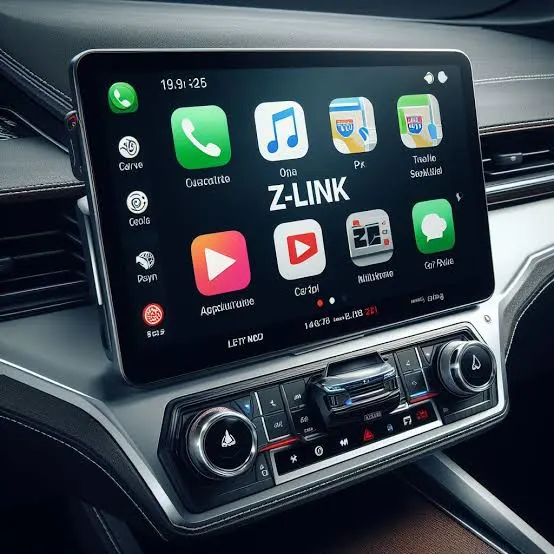Ever felt your Android car stereo was sluggish, glitchy, or missing basic apps like ZLINK or CarPlay support? You’re not alone. Most drivers hit a wall after a reset, or a firmware bug ruins the experience. The fix? A proper software update via USB is done safely, step by step.
Let’s walk through the full, human-friendly guide to updating your Android car stereo with a USB drive. From figuring out your current build to handling update errors, this article covers every bump on the road. And don’t worry, no tech background required.
Check Your Android Stereo’s Firmware Version:
Before you even download a file, you need to know exactly what version of firmware your head unit is running. Installing the wrong version isn’t just useless, it can break your stereo. This is your starting line.
To identify the build:
Steps to Follow:
- Go to your stereo’s Car Settings.
- Tap on System Settings or About Device.
- Look for firmware labels like K2501_NWD or K2501_UP.
- Write it down or snap a photo to reference later.
Why Does It Matters?
- Updates are build-specific.
- Compatibility issues arise when users ignore this step.
- Some updates reintroduce key apps like ZLINK or speed up slow touchscreens.
Never guess your version, it’s like installing Mac software on a Windows PC. Wrong move, wrong result.
Download the Right Firmware File:
Once you’ve identified your firmware version, it’s time to find the appropriate update package. A mismatched file won’t work, and in the worst case, could brick your unit. So take your time here.
Here’s what to do:
- Search Online for Your Build: Use forums, the manufacturer’s site, or trusted tech communities to find the update for your firmware ID.
- Verify the Source: Ensure it’s not from a sketchy third-party website.
- File Size Check: Most firmware updates are between 800MB and–1.2GB. If yours is suspiciously small, avoid it.
- Rename Before Use: Once downloaded, rename the file to update.zip (all lowercase).
Extra Tips:
- Always check if the update adds features like 360-camera view, newer ZLINK versions, or UI upgrades.
- Save the file to a safe folder for backup.
Prep Your USB Drive Like a Pro:
The update file alone isn’t enough, you’ll need to prepare a USB drive properly for the system even to recognize it. A wrong format or folder structure is one of the biggest reasons updates fail.
Do the following:
- Use a 16 GB+ USB drive (older 2.0 drives work better than 3.0 in many stereos).
- Format it to FAT32 (not exFAT or NTFS).
- Place update.zip at the root, or create this folder path if the file isn’t detected:
- mnt > media_rw > udisk > update.zip
Common Pitfalls:
- Forgetting the folder structure causes “file not found” errors.
- Not renaming to update.zip leads to file recognition failure.
Think of this as labeling a box for delivery. If your stereo can’t read the label, it won’t open the box.
Run the Update on Your Android Car Stereo:
Now comes the part that makes most people nervous, actually installing the update. Take a breath. If you’ve followed all the steps so far, this is surprisingly smooth.
Steps to Perform the Update:
- Plug the USB drive into your stereo’s USB port.
- Go to Car Settings > System Settings > System Update
- Tap the detected update.zip file.
- Choose Start Update and wait.
Important Notes:
- Do not turn off the engine or remove the USB drive during the update.
- Keep the car in accessory mode or running.
- The update takes around 10–15 minutes.
- Your system will automatically reboot once complete.
What Not to Do:
- Don’t rush it. If the screen seems stuck, let it finish.
- Don’t press buttons or unplug things mid-update.
Restore ZLINK or Other Missing Apps After Update:
Sometimes after a successful firmware upgrade, apps like ZLINK, Bluetooth drivers, or navigation tools may still be missing. That’s normal, and fixable.

- Manual APK Installation: Download ZLINK or other system apps’ APKs from the official source or trusted forums.
- Use ES File Explorer or another APK installer on your stereo.
- Tap on the APK, install, and allow permissions.
- Some firmware builds are “clean” versions meant for developers.
- ZLINK, EasyConnection, or AutoKit may need manual restoration.
If you’re unsure about the APKs, find the version that came bundled with your head unit originally, forums are goldmines for these files.
Conclusion:
Updating your Android car stereo might sound like a nerve-wracking process, but once you break it into steps, identify the version, get the right file, prep the USB, run the update, it’s honestly straightforward. You don’t need to be a mechanic or a tech guru.
Whether your stereo lost ZLINK after a reset, or you’re simply chasing better performance, this guide puts you in control. Now you’ve got the tools to handle future updates without heading back to the dealer or wasting weekends Googling fixes.
FAQs:
No, but it’s always smart to back up your music, settings, and any downloaded apps before starting an update.
Make sure the file is named update.zip and placed in either the root directory or in the mnt/media_rw/udisk folder structure.
Avoid this by never unplugging or powering off your unit mid-update. If it happens, try re-flashing with a fresh update.zip.
Not necessarily. But if you’re missing features like ZLINK or see performance lags, an update can help.
No, the head unit typically requires a standalone USB pendrive formatted to FAT32 to detect and apply firmware updates.
